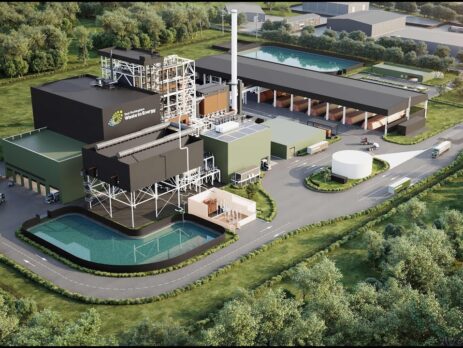Industry Overview: Waste to Energy
The waste to energy industry utilises several waste treatment methods. Municipal and industrial solid waste is converted into electricity, and sometimes into heat for industrial processing and district heating systems. The main process is of course incineration, but intermediate steps of pyrolysis, gasification, and anaerobic digestion are sometimes used to convert the waste into useful by-products that are then used to generate power through turbines or other equipment. This technology is gaining wide recognition globally as a greener and cleaner form of energy than traditional burning of fossil fuels, and as a means of reducing waste production.
Types of waste to energy
Incineration
Incineration is a waste treatment process that involves the combustion of energy rich substances contained within waste materials, typically at high temperatures around 1000 °C. Industrial plants for waste incineration are commonly referred to as waste-to-energy facilities and are often sizeable power stations in their own right. Incineration and other high-temperature waste treatment systems are often described as “thermal treatment”. During the process waste is converted into heat and steam that can be used to drive a turbine in order to generate electricity. This method currently has an efficiency of around 15-29%, although it does have potential for improvements.
Pyrolysis
Pyrolysis is a different waste treatment process where decomposition of solid hydrocarbon wastes, typically plastics, takes place at high temperatures without oxygen present, in an atmosphere of inert gases. This treatment is usually conducted at or above 500 °C, providing enough heat to deconstruct the long chain molecules including bio-polymers into simpler lower mass hydrocarbons.
Gasification
This process is used to make gaseous fuels from heavier fuels and from waste containing combustible material. In this process, carbonaceous substances are converted into carbon dioxide (CO2), carbon monoxide (CO) and a small amount of hydrogen at high temperature. In this process, gas is generated which is a good source of usable energy. This gas can then be used to produce electricity and heat.
Plasma Arc Gasification
In this process, a plasma torch is used to ionise energy rich material. Syngas is produced which may then be used to make fertiliser or generate electricity. This method is more of a waste disposal technique than a serious means of generating gas, often consuming as much energy as the gas it produces can provide.
Reasons for Waste to Energy
As this technology is gaining wide recognition globally in regards to waste production and the demand for clean energy.
- Avoids methane emissions from landfills
- Offsets greenhouse gas emissions from fossil fuel electrical production
- Recovers and recycles valuable resources, such as metals
- Produces clean, reliable base-loaded energy and steam
- Uses less land per megawatt than other renewable energy sources
- Sustainable and steady renewable fuel source (compared to wind and solar)
- Destroys chemical waste
- Results in low emission levels, typically well below permitted levels
- Catalytically destroys nitrogen oxides (NOx), dioxins and furans using an selective catalytic reduction (SCR)
What are the Gas Hazards?
There are many processes to turn waste into energy, these include, biogas plants, refuse use, leachate pool, combustion and heat recovery. All these processes pose gas hazards to those working in these environments.
Within a Biogas Plant, biogas is produced. This is formed when organic materials such as agricultural and food waste are broken down by bacteria in an oxygen-deficient environment. This is a process called anaerobic digestion. When the biogas has been captured, it can be used to produce heat and electricity for engines, microturbines and fuel cells. Clearly, biogas has high methane content as well as substantial hydrogen sulphide (H2S), and this generates multiple serious gas hazards. However, there is an elevated risk of, fire and explosion, confined space hazards, asphyxiation, oxygen depletion and gas poisoning, usually from H2S or ammonia (NH3). Workers in a biogas plant must have personal gas detectors that detect and monitor flammable gas, oxygen and toxic gases like H2S and CO.
Within a refuse collection it is common to find flammable gas methane (CH4) and toxic gases H2S, CO and NH3. This is because refuse bunkers are built several metres underground and gas detectors are usually mounted high up in areas making those detectors hard to service and calibrate. In many cases, a sampling system is a practical solution as air samples can be brought to a convenient location and measured.
Leachate is a liquid that drains (leaches) from an area in which waste is collected, with leachate pools presenting a range of gas hazards. These include the risk of flammable gas (explosion risk), H2S (poison, corrosion), ammonia (poison, corrosion), CO (poison) and adverse oxygen levels (suffocation). Leachate pool and passageways leading to the leachate pool requiring monitoring of CH4, H2S, CO, NH3, oxygen (O2) and CO2. Various gas detectors should be placed along routes to the leachate pool, with output connected to external control panels.
Combustion and heat recovery requires the detection of O2 and toxic gases sulphur dioxide (SO2) and CO. These gases all pose a threat to those who work in boiler house areas.
Another process that is classed as a gas hazard is an exhaust air scrubber. The process is hazardous as the flue gas from incineration is highly toxic. This is because it contains pollutants such as nitrogen dioxide (NO2), SO2, hydrogen chloride (HCl) and dioxin. NO2 and SO2 are major greenhouse gases, while HCl all of these gas types mentioned here are harmful to human health.
